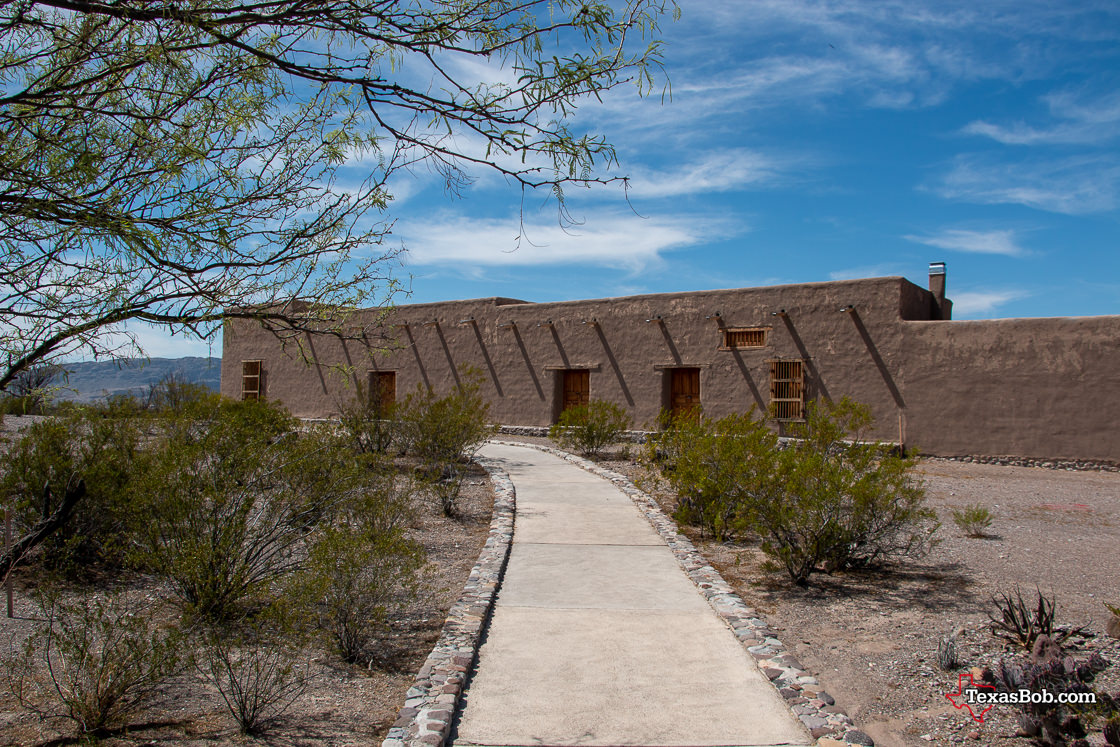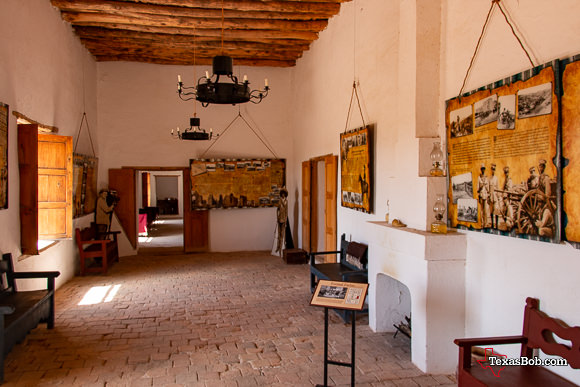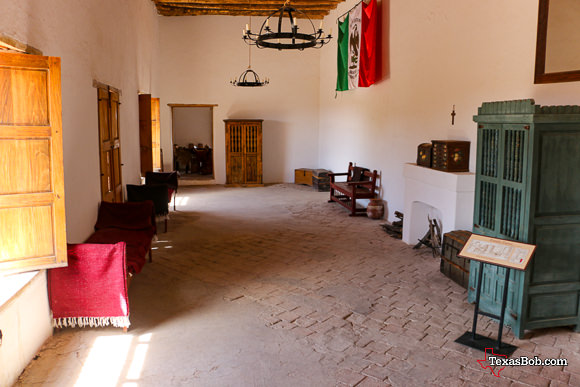It all started back in the 1830's in Chihuahua City, Mexico When Ben met Juana. Juana Pedrasa owned some land on the Rio Bravo (Rio Grande) so Ben Leaton married her.
In 1848, Ben, Juana and their three children moved from Chihuahua City to the land Juana owned located near the confluence of the Rio Grande and Rio Conchos, also known as the La Junta District. This part of the Rio Grande river had been under cultivation for a least 800 years by indigenous peoples before Ben Leaton and his family arrived.
They traveled about up the Chihuahua Trail. When they got to the land Ben Leaton started doing three things, farming, being a Chihuahua Trail freighter and buying more land. Ben Leaton was the first Anglo-American farmer in Presidio County.
One of the better land "deals" Ben Leaton made was when he bought some adjacent land which included the ruins of the Spanish fort, El Fortín de San José at La Junta.
The fort, El Fortín de San José was founded in 1773. After the fort was abandon in 1810 and was occupied by Juan Bustillos who took it as his home in 1830. By August 1848 Leaton had bought El Fortín from Bustillos and established Fort Leaton as his home, trading post, and private fort.
Fort Leaton is on Farm Road 170 five miles southeast of Presidio in southern Presidio County. The fort sits on a bluff overlooking the Rio Grande and on the Chihuahua Trail. Fort Leaton was listed as the first seat of Presidio County in 1850.
Ben Leaton and his family truly lived in the middle of nowhere, but it was on the trail to Santa Fe and El Paso. A great location for a trader.
On 1848 an mapping expedition led by John C. (Jack) Hays to find a practical road from San Antonio to Chihuahua via El Paso. It had taken them two months to reach "Fort Leaton". Ben Leaton is said be a great host for travelers and Juana was an excellent cook.
While he was there, he and his men purchased a few horses, and supplies. It is said that Ben Leaton prices were very high.
The Following year, Lt. William H.C. Whiting and party arrived at Fort Leaton while exploring a military route between San Antonio and Santa Fe. By this time Leaton owned two slaves, employed eight to 10 workers, and maintained extensive farming operations. Whiting referred to the fort as "one of the most important places on the Rio Grande" due to its position as the lone defensive outpost and supply station along a 45O—mile stretch of river.
Following Ben Leaton's death in 1851, Juana Pedrasa married Edward Hall and continued the fort's operation as a trading post, however Ed Hall was not the trader Ben was. Then Fort Leaton was foreclosed and it now belonged to John Burgess in 1862. The only problem was Juana and Ed Hall were not going to budge. Ten years later the Halls were still were living in Fort Leaton. Then they were murdered, and John Burgess was indicted for their murder.
Despite a second slaying, this time of Burgess by a vengeful Bill Leaton the Hall family continued the trading business through 1884. The Burgesses went on to occupy the deteriorating structure until 1927.
Following Fort Leaton's acquisition by the Texas Parks and Wildlife Department in 1967, restoration work was completed in 1978.


